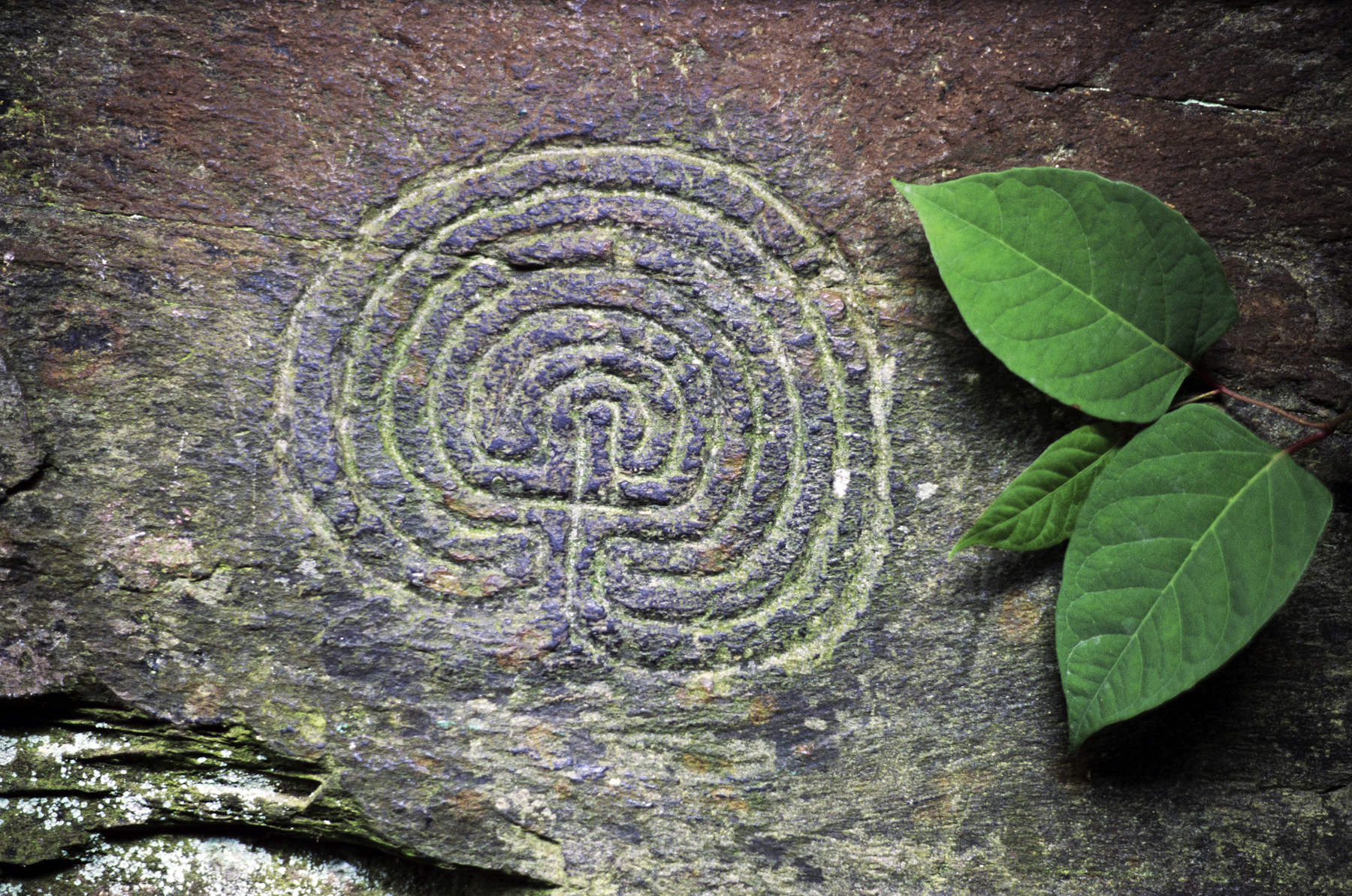Labyrinth, << LAB uh rihnth, >> was a place with many confusing paths and passageways. According to Greek mythology, Daedalus built it for King Minos of Crete. Minos wanted it as a prison for the monster called the Minotaur. He sacrificed seven Athenian youths and seven maidens to the Minotaur every year.

Theseus, the son of an Athenian king, went into the Labyrinth, killed the Minotaur, and found his way out of the twisting passages. Ariadne, Minos’ daughter, had given him a ball of thread to unwind as he went in. He followed the thread and escaped.
Archaeologists have discovered a palace that may have been the site of the Cretan Labyrinth. The palace is located in the Cretan city of Knossos. It has many passageways and resembles the mythical Labyrinth. Many double axes were found at the palace. Most scholars believe that the word labyrinth came from labrys, which means double axe. Later, the term labyrinth came to mean any place that contained many confusing passageways. Archaeologists have also found traces of another great labyrinth in Egypt.
Buildings with confusing and seemingly endless networks of passages are found in some amusement parks. A modern labyrinth of this nature is sometimes called a maze and is used for testing skill in problem solving. Many toys and games are based on the idea of the labyrinth or maze. Psychologists use mazes in experiments to test the reactions of animals (see Learning (Multiple-response learning)).
